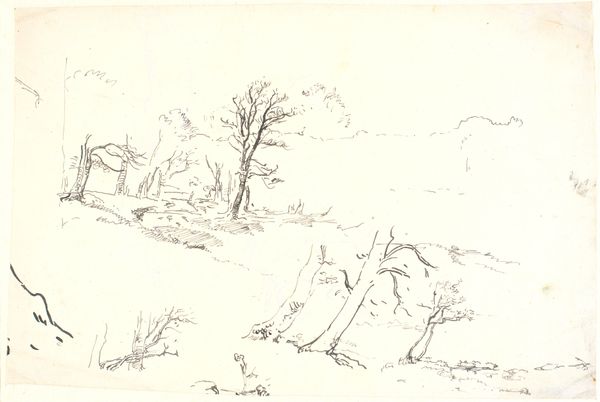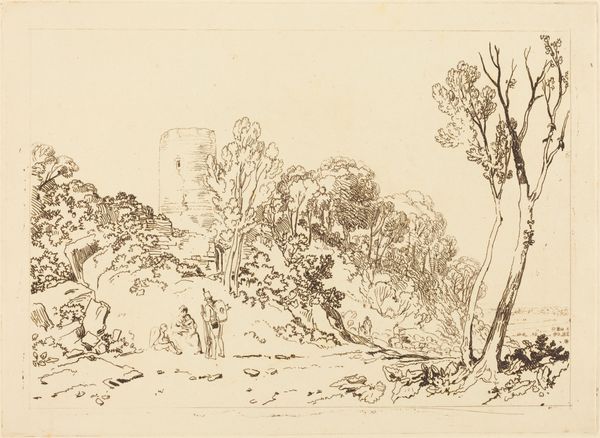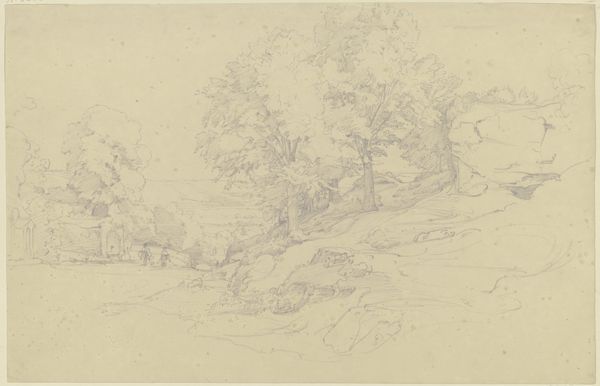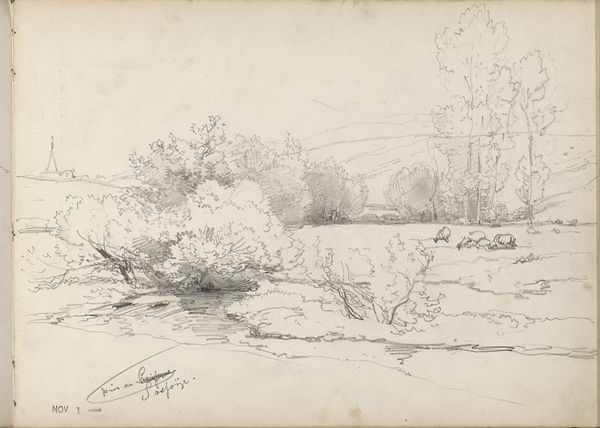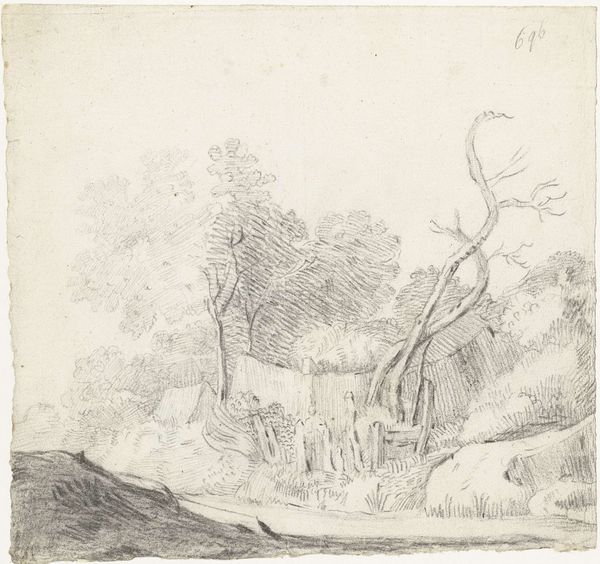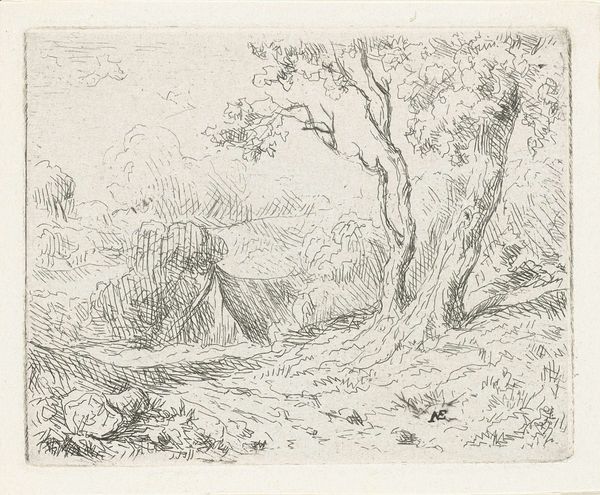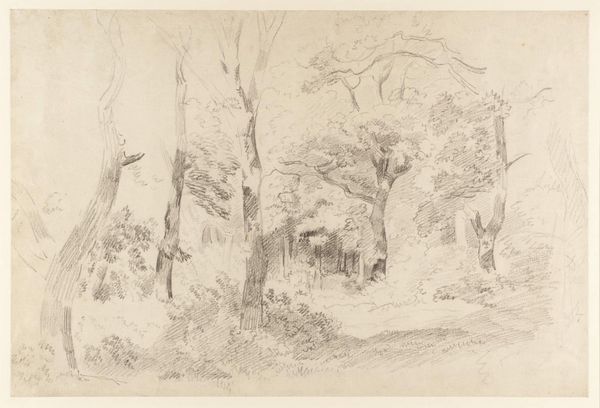
drawing, paper, ink
#
drawing
#
ink drawing
#
pen sketch
#
landscape
#
paper
#
ink
#
watercolor
#
realism
Copyright: Rijks Museum: Open Domain
Curator: Here we have Willem Roelofs' "Landschap," a drawing created between 1846 and 1851, using ink on paper. What's your immediate reaction? Editor: It feels like a fleeting observation, a whisper of a scene rather than a fully realized vista. The lines are so delicate, almost tentative. Curator: That delicacy speaks volumes, doesn't it? Roelofs was deeply engaged in the changing landscape of the Netherlands at the time. He saw the country transforming through industrialization and urbanization, and actively promoted a kind of return to nature through the visual arts. Editor: And yet, there is a quiet strength in the composition. The arrangement of the trees, the subtle indication of a stream... the penstrokes themselves create a compelling rhythm. Notice the contrasting vertical strokes in the trunks compared to the horizontal reflections in the water. Curator: Indeed. Think of the cultural shift underway then, too. This wasn't just about depicting pretty scenes. Artists were increasingly expected to find their own voice, separate from academic tradition, to reflect a burgeoning national identity. This move was tied into larger political narratives about who had access to art and cultural capital in the country. Editor: I'm particularly drawn to the way the artist suggests form and space with such economy. It’s all implied. The bridge at the background could collapse if more weight was on it, the stream lacks depth beyond a dark single stripe. It’s like he’s challenging us to complete the image in our minds. Curator: Exactly. Realism in this period was never simply about photographic accuracy. Roelofs’ work and its peers are products of distinct dialogues and tensions in 19th century Netherlands that shape our view today. Editor: For me, it’s that challenge that makes it so engaging. You notice fresh visual tricks and prompts upon prolonged gaze. It shows us something about how even seemingly basic compositions can prompt new visual ideas and thought patterns. Curator: Roelofs captured something fundamental about the relationship between people and the natural world during this time period, so even simple compositions as such, were imbued with profound cultural weight. Editor: Ultimately, this is a lesson on how something as small as an ink sketch can hint at the grander forces at play around the work.
Comments
No comments
Be the first to comment and join the conversation on the ultimate creative platform.

